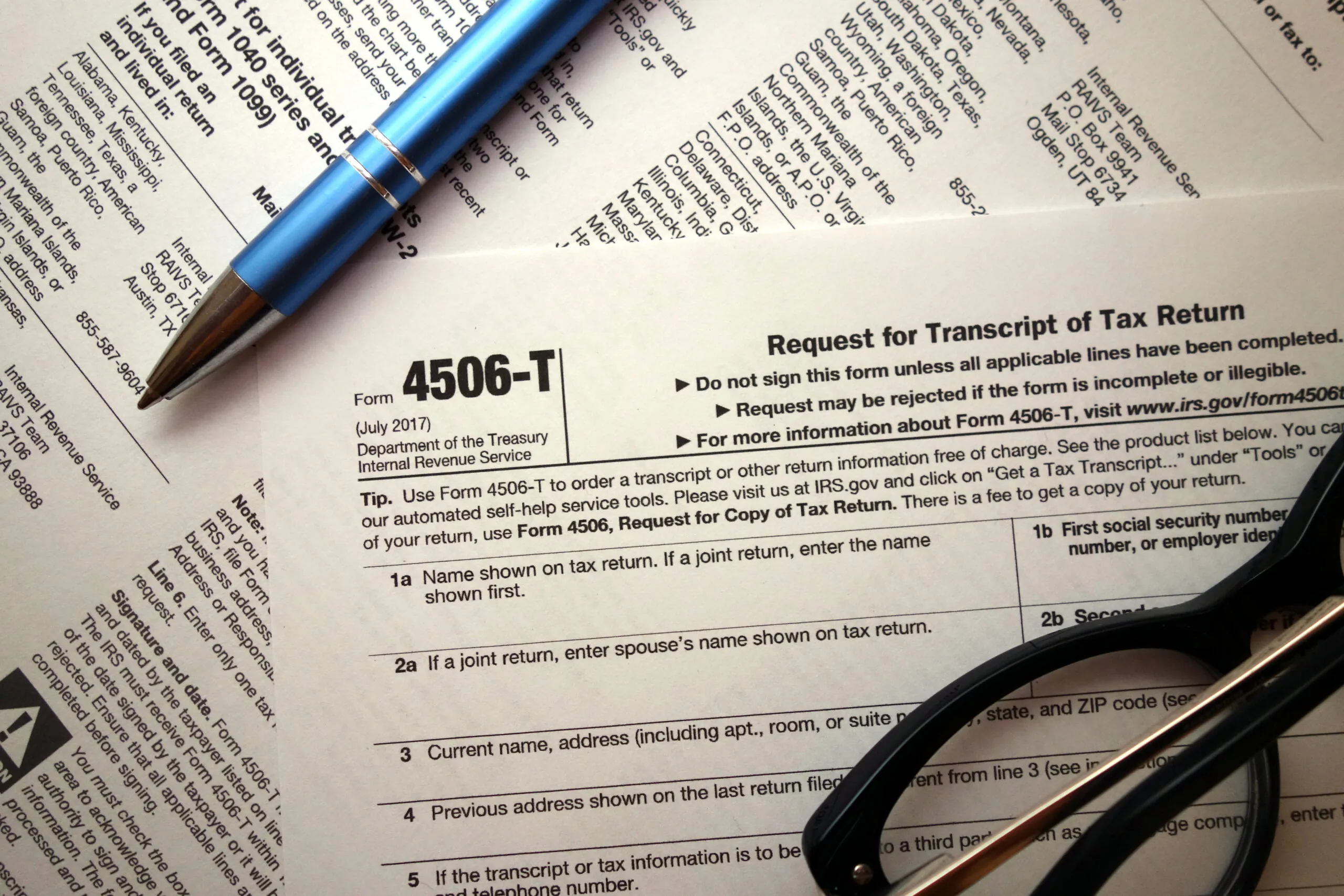The IRS has hundreds of forms and thousands of different letters, notices, and documents that it categorizes and processes each year, from millions of individuals and entities. No one expects the average taxpayer to know about half of all of these documents, let alone all of them. But if you are trying to qualify for a loan or need to have your income verified, then Form 4506-T may be relevant to you.
Form 4506-T is a request for a simplified tax transcript for any tax documents pertaining to you and you tax account. These include transcripts of your income, transcripts of your tax return, transcripts for your wages, transcripts of your tax account, or records of non-filing. Form 4506-T is not to be confused with Forms 4506, 4506-T-EZ, 4506-A, 4506-C, or 4506-F.
This post will go over when and why you might need to request and fill out a Form 4506-T from the IRS, as well as what each of the other 4506 forms might be used for, and when they might be relevant. Let’s dig in.
What is Form 4506-T?
When you send information to the IRS, that information gets double-checked against a wealth of data provided through information returns from banks, companies, and other institutions across the country.
While many Americans make mistakes on their tax returns, most of those mistakes are automatically and systematically flagged by computers and brought to the attention of human auditors. As such, you tax returns and other verifiable information sent to and maintained by the IRS tend to be good indicators of your current and ongoing financial health.
Furthermore, your tax information is private, and pertains solely to you and your person, via your SSN (Social Security Number) or your TIN (Taxpayer Identification Number).
Altogether, this means that a verified and true transcript or copy of information requested by you from the IRS can act as a proof of income and proof of identity at the same time.
The main difference between the tax returns requested through a normal Form 4506 and the shortened transcript requested through a Form 4506-T is that Form 4506-T results in a transcript with fewer identifying information – crucially, a Form 4506-T only provides the last four digits of your SSN, for example.
Contrast this to Form 4506, which provides access to a full copy of a specific requested tax document. The information that remains visible on a transcript requested through Form 4506-T still enables tax preparation, legal representation in tax matters, or income verification.
One of the most important features of a Form 4506 is that it allows you to request that the copy be directly sent to a dedicated and named third party. Not only does this help ensure that the document only finds its way to whom it is intended for (allowing you to easily prove fraud if the information leaks to anyone else), but this saves you the headache of needing to figure out a secure way to transport the documents safely and securely yourself. You can fill out and file Form 4506-T online, unless your tax year begins and ends in two different calendar years.
Form 4506-T vs. Form 4506 and Form 4506-T-EZ
Form 4506 requests the full copy of a tax return, record of account, or other requested tax document. Form 4506-T, on the other hand, requests a shorter transcript of said document.
Form 4506-T-EZ constitutes an even simpler tax transcript. The benefit of transcripts pulled this way is that they offer even less information – but that also acts as the form’s downside. Good if you only need to verify a limited amount of information, but oftentimes not enough to satisfy the requirements for certain lenders.
Form 4506-A is used by political or tax-exempt organizations to pull a copy of a tax return, as well as any relevant applications they used to apply for their tax status.
Form 4506-F is used by victims of identity theft to request a copy of the fraudulent tax return.
Form 4506-C is used to file an Income Verification Express Service (IVES) request for a transcript of tax return. The IVES program is used by certain organizations, such as lenders and banks, to confirm a borrower’s information while processing a loan application. Only businesses that are IVES participants may submit Form 4506-C.
When is Form 4506-T Required?
Form 4506-T is required when a lender or tax professional requests access to certain information for tax preparation, income verification, or identity verification purposes.
If you aren’t sure whether a company or service provider needs access to the information available in a tax transcript to provide the services you require, it’s best to ask them what they need the information for. Tax preparers often need to take a look at your past year’s tax return to know how best to file for the current year, for example.
How to Complete Form 4506-T
Form 4506-T is straightforward.
- Line 1a requires you to input the name on the tax return you want a transcript of. If you filed jointly, it would be the first name that appears on the tax return. Line 1b requests the first SSN on the tax return (or TIN, or EIN).
- Line 2a requires the other spouse’s name if it’s a joint tax return, as well as the other SSN/TIN/EIN on line 2b.
- Line 3 requires your current name and address. Line 4 requires your past address, if it was different at the time of filing the tax return.
- Line 5 requests your customer file number, if you already have one. This is only relevant if you’re working with a third party that provides customer file numbers. Basically, since these transcripts limit viewing of the SSN or TIN, the customer file number can be used by a third party (such as a lender or a tax lawyer) to filter through transcripts and match them to their respective customers.
- Line 6 requires you to name the return or document you are requesting via its Form number (e.g., Form 1040, Form 1120) – you can only request one document per Form 4506-T.
- Line 9 allows you to enumerate the year or the periods that you are request (from date to date, for example). This allows you to further limit the information on the transcript to whatever is relevant.
- Finally, once every applicable line has been filled out, you can sign and date the document.
If you’re not experienced in dealing with the IRS, it can be a headache and a half – thankfully, knowing your way around helps. Work with us at Rush Tax Resolutions to resolve your tax issues quickly and competently, and never worry about your taxes again.











